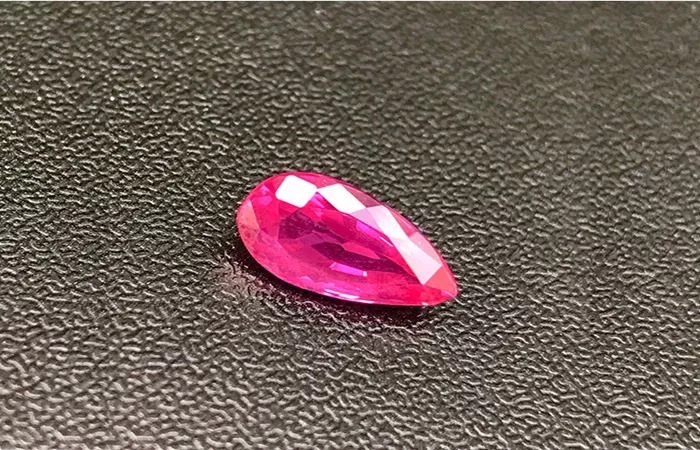Pink sapphires are a beloved gemstone in the world of jewelry, known for their delicate hues and captivating beauty. However, with the prevalence of synthetic and treated gemstones, it’s crucial to know how to authenticate a real pink sapphire. This guide will provide a comprehensive, science-based approach to identifying genuine pink sapphires, ensuring you make informed purchases.
Understanding Pink Sapphire Basics
Composition and Origin
Pink sapphires belong to the corundum family, which includes rubies and sapphires. Corundum’s primary component is aluminum oxide (Al₂O₃). Pure corundum is colorless, but impurities give it its color. Chromium is the key element that gives pink sapphires their pink hues. When chromium content is between 0.9% and 4%, the gemstone appears pink or reddish. Below 0.9% chromium, it leans towards a pink sapphire; above 4%, it’s classified as a ruby.
Color Range
Pink sapphires exhibit a wide range of pink shades, from soft, pastel pinks to vibrant hot pinks. The most sought-after pink sapphires are those with a pure, vivid pink color, often described as “hot pink.” These gems combine the warmth of a ruby with the elegance of a sapphire.
Identifying Real Pink Sapphires
1. Visual Inspection
Color Saturation and Tone
- Saturation: Look for a pure, vivid pink color. High saturation means the color is intense and bright. Lower saturation results in a duller, more muted appearance.
- Tone: The tone refers to the lightness or darkness of the color. A well-balanced tone ensures the pink sapphire appears neither too light nor too dark.
Clarity and Transparency
- Inclusions: Natural pink sapphires often contain inclusions, such as tiny crystals, fractures, or fingerprints. These are natural birthmarks that authenticate the gemstone’s origin.
- Transparency: While some pink sapphires can be translucent, the best ones are transparent, allowing light to pass through with minimal scattering.
Cut and Polish
- Cut: A well-cut pink sapphire will exhibit excellent brilliance and sparkle. The gemstone should be cut to maximize its light-reflecting properties.
- Polish: A smooth, polished surface is essential. Any scratches or imperfections can detract from the gemstone’s beauty and value.
2. Testing with Gemological Tools
Refractometer:A refractometer measures the refractive index of the gemstone, which is unique for each mineral. Corundum, including pink sapphires, has a refractive index of approximately 1.762 to 1.770. This range helps distinguish pink sapphires from other gemstones with similar appearances.
Spectroscope:A spectroscope analyzes the absorption spectrum of the gemstone. Pink sapphires with chromium content will show specific absorption lines, confirming their composition.
UV-Visible Spectrophotometer:This advanced tool measures the gemstone’s color response to ultraviolet light. Pink sapphires typically exhibit a strong pink fluorescence under UV light, which can help identify treated or synthetic stones.
3. Advanced Testing Methods
X-Ray Diffraction (XRD):X-ray diffraction analyzes the crystal structure of the gemstone. Each mineral has a unique X-ray diffraction pattern, allowing for precise identification.
Electron Microprobe Analysis (EMPA):EMPA measures the chemical composition of the gemstone, confirming the presence of aluminum, oxygen, and chromium. This method is highly accurate but requires a small sample of the gemstone.
Fourier Transform Infrared Spectroscopy (FTIR):FTIR analyzes the vibrational modes of the gemstone’s molecular bonds. This technique can detect trace elements and structural differences between natural and synthetic corundum.
4. Heat Treatment and Origin
Heat Treatment:Many pink sapphires undergo heat treatment to enhance their color. This process is widely accepted in the gemstone industry and does not detract from the gemstone’s authenticity. However, treated stones should be disclosed to buyers.
Origin:The origin of the pink sapphire can also affect its value and appearance. Sri Lanka is renowned for producing high-quality pink sapphires with vivid colors and excellent clarity. Madagascar is another significant source, but its pink sapphires often have different characteristics, such as a higher blue undertone or internal inclusions.
Identifying Treated and Synthetic Pink Sapphires
Treated Pink Sapphires
- Heat Treatment: As mentioned, heat treatment is common. Look for any signs of heat-induced changes, such as altered inclusions or color distribution.
- Diffusion Treatment: Some pink sapphires undergo diffusion treatment, where color is introduced to the surface. This treatment can be detected by examining the gemstone under a microscope for color concentration at the surface.
Synthetic Pink Sapphires
- Laboratory-Created: Synthetic pink sapphires are created in laboratories using methods such as the Verneuil process or flux growth. These stones can be indistinguishable from natural ones visually but can be detected using advanced gemological tools.
- Glass and Plastic Imitations: Cheaper imitations may be made of glass or plastic. These can be easily identified by their lower hardness, refractive index, and density.
Conclusion
Identifying a real pink sapphire requires a combination of visual inspection, gemological testing, and knowledge of treatment and origin. By following the guidelines outlined in this guide, you can increase your chances of acquiring a genuine, high-quality pink sapphire. Remember, the best way to ensure authenticity is to obtain a gemological certificate from a reputable laboratory. Happy hunting for your perfect pink sapphire!
Related topic:
- How to Identify Genuine Padparadscha Sapphires: A Simple Guide
- The Mines of Blue Sapphires: Things You Need To Know
- The Meaning Of Asscher Cut Sapphires: A Simple Guide


